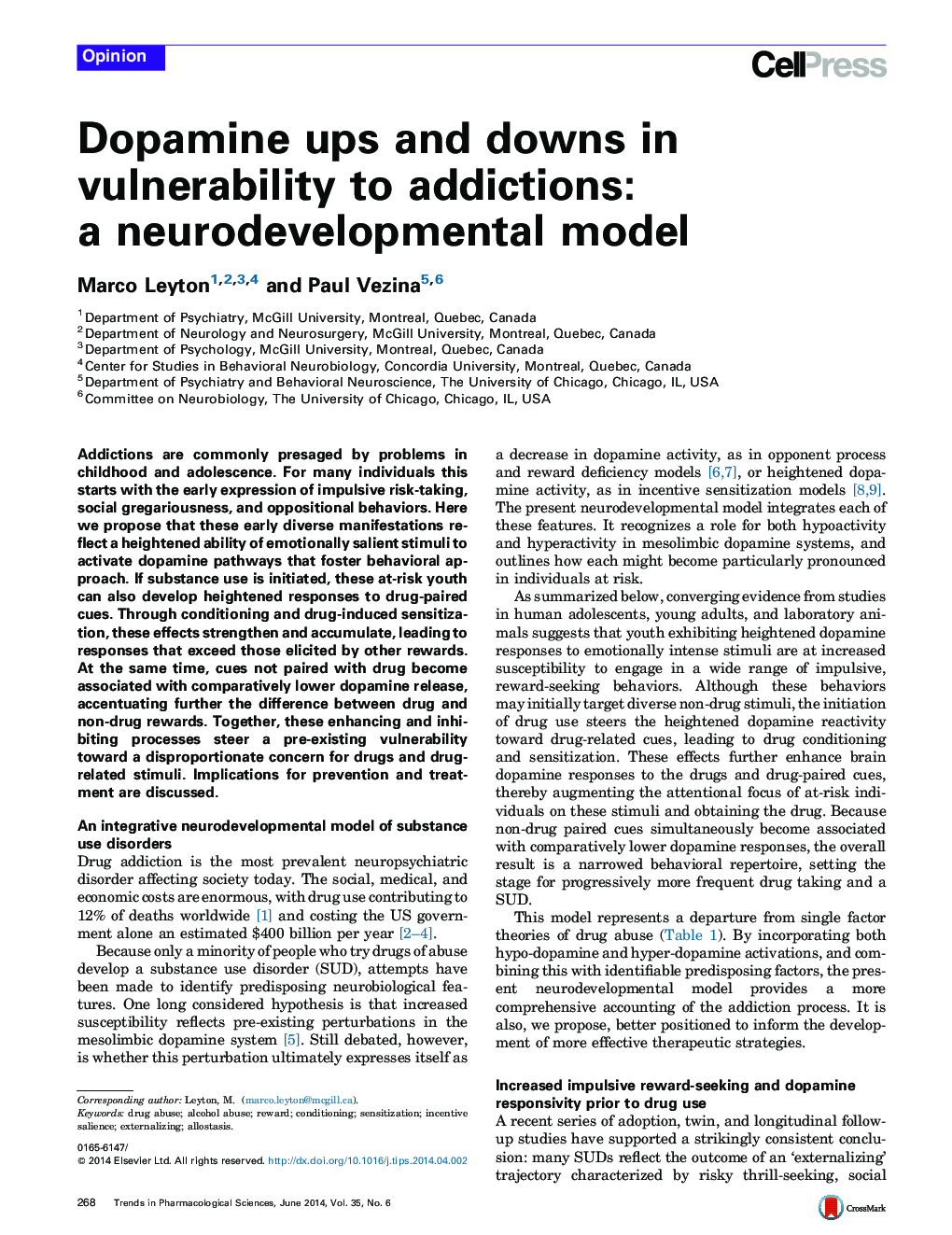| Article ID | Journal | Published Year | Pages | File Type |
|---|---|---|---|---|
| 2572558 | Trends in Pharmacological Sciences | 2014 | 9 Pages |
•Addictions are commonly presaged by problem behaviors in childhood.•Susceptibility might reflect increased dopamine responses to salient events.•Drugs hijack dopamine responses, directing behavior preferentially toward drugs.•Non-drug events become less salient and less able to activate dopamine.•Narrowed interests develop, setting the stage for frequent drug use and addictions.
Addictions are commonly presaged by problems in childhood and adolescence. For many individuals this starts with the early expression of impulsive risk-taking, social gregariousness, and oppositional behaviors. Here we propose that these early diverse manifestations reflect a heightened ability of emotionally salient stimuli to activate dopamine pathways that foster behavioral approach. If substance use is initiated, these at-risk youth can also develop heightened responses to drug-paired cues. Through conditioning and drug-induced sensitization, these effects strengthen and accumulate, leading to responses that exceed those elicited by other rewards. At the same time, cues not paired with drug become associated with comparatively lower dopamine release, accentuating further the difference between drug and non-drug rewards. Together, these enhancing and inhibiting processes steer a pre-existing vulnerability toward a disproportionate concern for drugs and drug-related stimuli. Implications for prevention and treatment are discussed.
